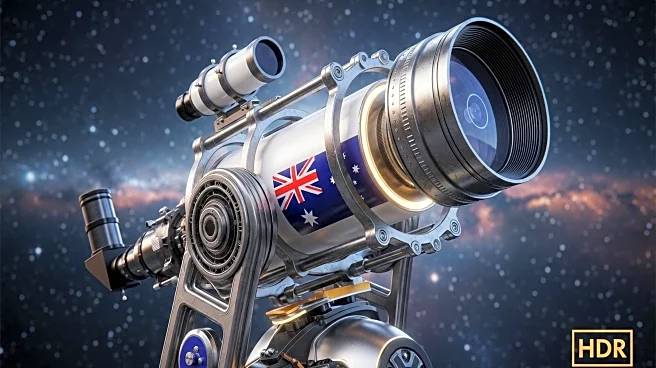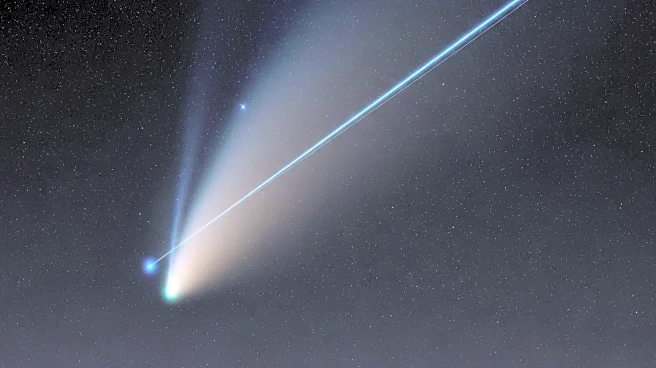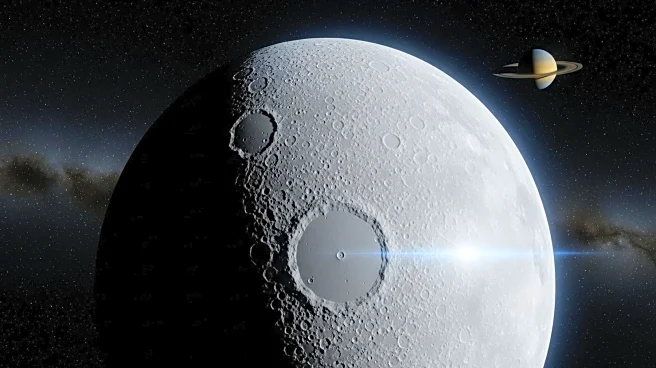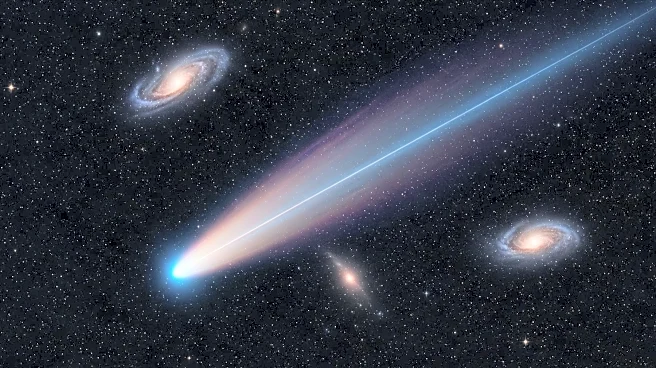What's Happening?
NASA is advancing its plans for the Habitable Worlds Observatory (HWO), a flagship project set for the 2030s, designed to explore Earth-like planets and assess their habitability. The observatory, which follows the Astro2020 decadal survey's top ranking for large space projects, aims to answer fundamental questions about life beyond Earth. The HWO will feature transformative ultraviolet, optical, and infrared capabilities, surpassing the Hubble Space Telescope. The project is under active scientific and engineering development, with contributions from industrial, academic, and international collaborators. A recent conference hosted by STScI and JHU in Washington, D.C., highlighted the observatory's scientific and technological advancements, including new exploratory architecture concepts and the formation of community science and instrument teams.
Why It's Important?
The development of the Habitable Worlds Observatory represents a significant leap in astrophysical research, potentially transforming our understanding of planetary systems and the search for extraterrestrial life. By detecting and characterizing Earth-like planets, the HWO could provide insights into the conditions necessary for life and the architecture of solar systems. The observatory's capabilities will also contribute to planetary defense by tracking asteroids and interstellar comets. The project underscores the importance of international collaboration in space exploration, with contributions from multiple countries enhancing the scope and ambition of the mission. The HWO's success could pave the way for future space missions and bolster the emerging space economy.
What's Next?
NASA has convened a Community Science and Instrument Team (CSIT) to guide the next stage of HWO's development, refining science cases and assessing technical concepts. The CSIT will hold an open community event at the upcoming AAS meeting in Phoenix, Arizona. Additionally, a Science Interest Group (SIG) has been established to welcome broad community participation in shaping the observatory's scientific goals. As the project progresses, formal international partnerships are expected to form, furthering global collaboration in the search for habitable worlds.
Beyond the Headlines
The Habitable Worlds Observatory not only aims to answer the question of whether we are alone in the universe but also seeks to advance our understanding of cosmic origins, from the life cycles of galaxies to the formation of stars and planets. The observatory's design includes serviceable features, allowing it to adapt to unforeseen discoveries and incorporate next-generation instruments, ensuring its scientific relevance for decades. This adaptability connects directly to the emerging space economy and future human exploration beyond Earth.











